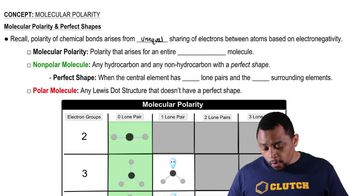Which form of aspartic acid in Problem 18.54 is the zwitterion? What is the pI for the zwitterion?
a.
b.
c.
 Verified step by step guidance
Verified step by step guidance Verified video answer for a similar problem:
Verified video answer for a similar problem:



 5:16m
5:16mMaster Nonpolar Amino Acids Concept 1 with a bite sized video explanation from Jules
Start learning